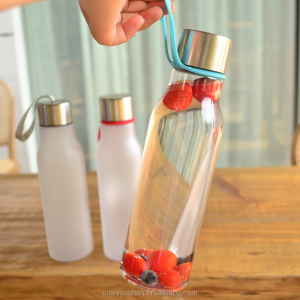When it comes to recycling, many people wonder what can and cannot be recycled. A common question that comes up often is whether broken bottles can be recycled. Glass recycling plays a vital role in reducing waste and conserving resources, but understanding the process behind recycling broken bottles is crucial. In this blog post, we explore the possibility of recycling broken bottles, unravel the secrets behind glass recycling, and highlight its environmental and social benefits.
1. Challenges of cullet recycling:
Recycling cullet can present some challenges compared to whole glass bottles. The most significant challenge lies in the sorting process. Broken glass often produces smaller fragments that make it difficult for automated sorters to detect and separate them. The sharp edges of cullet also pose a safety hazard for workers handling the recycling process. However, these challenges do not mean that cullet is not recyclable – just that extra care and attention is required during the recycling process.
2. Glass recycling process:
To recycle broken glass bottles, the first step is to collect and sort them separately from other recyclable materials. This can be done through designated recycling bins or specific collection centres. Once collected, the glass shards are sorted by color to ensure the recycling process produces a high-quality end product.
After sorting, the broken glass goes through a cleaning process to remove any impurities, including labels and caps. Next, it is crushed into small pieces called cullet. Cullet glass is mixed with other raw materials, such as sand, limestone, and soda ash, and melted at high temperatures in a furnace to form molten glass. This molten glass can then be molded into new bottles, jars or other glass products.
3. Benefits of recycling broken bottles:
Recycling broken bottles brings many benefits to the environment and society. First, recycling glass can help conserve natural resources by reducing the need for raw materials in glass production. It also saves energy, as the process of melting cullet requires less energy than producing glass from scratch.
Additionally, recycling broken bottles reduces landfill waste, as glass can take a million years to break down naturally. By recycling broken bottles, we divert them from landfill and contribute to a more sustainable future.
4. Creative reuse of broken bottles:
In addition to traditional recycling methods, broken bottles can also find new life through creative reuse. Some examples include using broken glass pieces for artwork, mosaic projects, or even as decorative garden stones. These creative endeavors not only give cullet a new purpose, but also add aesthetic value to our surroundings.
All that said, broken bottles can indeed be recycled. Despite the challenges, recycling cullet remains an important part of the waste management process. By promoting glass recycling, we can reduce waste, conserve resources and have a positive impact on the environment, all while giving broken bottles a second chance. Let’s embrace glass recycling and contribute to a greener, more sustainable world.
Post time: Aug-28-2023
